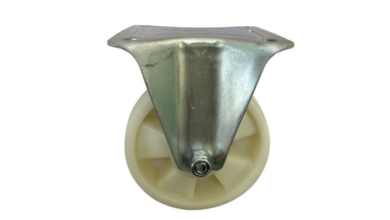
The global tattoo market size is poised for impressive growth, driven by increasing demand for body art, advancements in tattooing technology, and shifting cultural perceptions. The industry is expected to grow at a CAGR of 9.60% during the forecast period of 2025-2034, reflecting the evolving preferences of individuals worldwide. Tattoos, once considered niche, are now mainstream, with people embracing them as expressions of identity, creativity, and cultural significance.
This blog delves into the tattoo market’s dynamics, highlighting key drivers, challenges, emerging trends, and segmentation insights to provide a comprehensive outlook for the coming decade.
Understanding the Tattoo Market
Tattoos are a form of body art where permanent ink is applied to the skin using specialised equipment. Over the years, tattoos have evolved from being symbols of subcultures to becoming widely accepted and celebrated forms of self-expression. The market includes tattoo services, tattoo removal, and tattoo equipment and ink manufacturing, catering to a diverse audience.
Key Drivers of Market Growth
- Shifting Cultural Perceptions Tattoos have become widely accepted across various cultures and demographics, breaking down traditional stigmas. This shift has significantly increased the demand for tattoo services worldwide.
- Rising Popularity Among Millennials and Gen Z Millennials and Gen Z view tattoos as a form of personal storytelling and artistic expression. Their openness to body art drives market growth as they account for a large portion of the global population.
- Advancements in Tattoo Technology Innovations in tattoo machines, inks, and techniques have improved the safety, precision, and aesthetic quality of tattoos. These advancements attract new customers and encourage repeat visits.
- Growth of Customisation Personalised and intricate tattoo designs are in high demand as individuals seek unique ways to express themselves. Tattoo artists are leveraging their skills to cater to this growing need for customisation.
- Expansion of Tattoo Removal Services With advancements in laser tattoo removal technology, individuals who regret their tattoos or want to make room for new designs are opting for safe and effective removal services, contributing to market growth.
- Influence of Social Media Platforms like Instagram, TikTok, and Pinterest have become powerful tools for tattoo artists to showcase their work. Viral trends and celebrity endorsements significantly influence consumer interest in tattoos.
Challenges in the Tattoo Market
- Health and Safety Concerns Concerns over hygiene, infections, and allergic reactions can deter potential customers. Strict adherence to safety standards and proper training for tattoo artists are crucial.
- Regulatory Hurdles The tattoo industry faces varying regulations across regions, impacting the standardisation of practices and products.
- Tattoo Removal Costs While tattoo removal services are growing, they remain expensive and time-consuming, potentially limiting their accessibility.
- Competition from Alternative Body Art Temporary tattoos, henna, and other non-permanent body art forms offer alternatives to those hesitant about permanent tattoos, creating competition for the industry.
- Cultural and Religious Barriers In certain regions, cultural or religious beliefs still restrict the acceptance of tattoos, posing challenges to market penetration.
Emerging Trends in the Tattoo Market
- Eco-Friendly Inks and Equipment Sustainability is gaining traction in the tattoo industry. Eco-friendly and vegan tattoo inks, along with sustainable equipment, are becoming popular among environmentally conscious consumers.
- Minimalistic and Fine-Line Tattoos Small, delicate, and minimalistic designs are in demand, particularly among first-time customers seeking understated body art.
- Rise of Tattoo Conventions Tattoo conventions have become global events, bringing artists and enthusiasts together. These platforms boost market visibility and encourage networking within the industry.
- Augmented Reality (AR) Tattoo Previews AR technology allows customers to preview tattoos on their skin before committing, reducing the hesitation associated with permanent body art.
- Growth of Cosmetic Tattoos Permanent makeup, such as microblading and lip blushing, is a growing segment of the tattoo market, appealing to customers looking for aesthetic enhancements.
- Cultural and Tribal Designs There is a resurgence of interest in traditional tattoo styles, such as Polynesian, Japanese, and Indigenous designs, reflecting cultural pride and heritage.
Market Segmentation Insights
- By Product Type
- Tattoo Ink: Includes traditional, organic, and vegan inks, witnessing increasing demand for safe and high-quality options.
- Tattoo Machines: Electric and rotary machines dominate the segment, driven by technological advancements.
- Accessories: Covers needles, grips, and hygiene products essential for tattooing.
- By Service Type
- Tattoo Services: The largest segment, including traditional and custom tattoo designs.
- Tattoo Removal: Growing rapidly due to advancements in laser technology.
- Cosmetic Tattoos: Includes permanent makeup and medical tattoos for scar camouflage.
- By End-User
- Tattoo Studios: The primary service providers, ranging from boutique studios to large chains.
- Individual Artists: Independent artists cater to niche markets with custom and intricate designs.
- By Region
- North America: Largest market due to high cultural acceptance and significant artist representation.
- Europe: Strong growth driven by a thriving tattoo culture and expanding artist communities.
- Asia-Pacific: Fastest-growing region, supported by rising disposable incomes and growing acceptance of tattoos.
- Rest of the World: Emerging markets in Latin America and the Middle East show untapped potential.
Future Outlook
The global tattoo market, projected to grow significantly by 2034, offers immense opportunities for artists, studios, and manufacturers. To maximise growth, industry stakeholders should:
- Invest in technology, such as AR and advanced tattoo machines.
- Embrace sustainability by adopting eco-friendly inks and equipment.
- Expand services, particularly in tattoo removal and cosmetic tattoos.
- Leverage social media to engage with customers and showcase artistry.
As cultural perceptions continue to evolve, the tattoo industry remains a vibrant and dynamic space, reflecting individuality, artistry, and self-expression. With continued innovation and a focus on customer needs, the market is well-positioned for sustained growth over the next decade.

